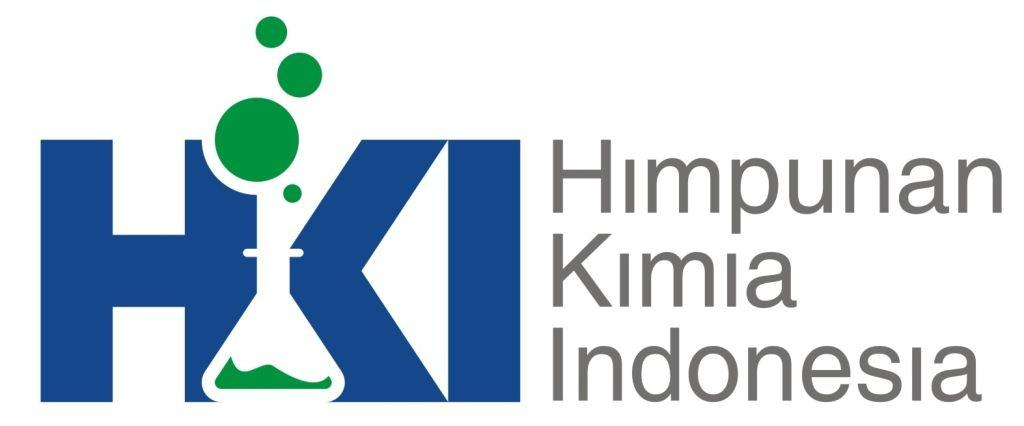Ceftriaxone Degradation by Titanium Dioxide (TiO2) Nanoparticles: Toxicity and Degradation Mechanism
Abstract
Ceftriaxone is a third generation of cephalosporin antibiotics that commonly used in patients with ulcers. Ceftriaxone residues in the environment are degraded using Titanium dioxide (TiO2) nanoparticles. Degradation of ceftriaxone using TiO2 nanoparticles was influenced by environmental conditions, such as light sources, pH of the solution, the mass of TiO2 nanoparticles, and the length of radiation. The remained ceftriaxone was analyzed by using a spectrophotometer UV-visible. The toxicity of the solution after the degradation process was tested on Escherichia coli and the type of products resulted was analyzed using Liquid Chromatography-Mass Spectrophotometry (LC-MS). The optimum conditions in degrading 50 mL 250 ppm ceftriaxone was radiation under a mercury UV lamp (white), pH 8, and 100 mg of TiO2 nanoparticles for 9 hours. The degradation degree of ceftriaxone obtained was 96.52%, producing simpler compounds that not toxic to E. Coli.
Keywords
References
Ambrosetti B, Campanella L, Palmisano R. 2015. Degradation of antibiotics in aqueous solution by photocatalytic process: comparing the efficiency in the use of ZnO or TiO2. Journal of Environmental Science and Engineering A. 4(6): 273-281. doi:10.17265/2162-5298/2015.06.001
Doadrio AL, Mayorga A, Orenga R. 2002. VO2+ and Cu2+ Interactions with ceftriaxone and ceftizoxime. HPLC kinetic studies. J. Braz. Chem. Soc. 13(1): 95-100. doi:10.1590/S0103-50532002000100015
Fenollar-Ferrer C, Frau J, Donoso J, Muñoz F. 2008. Evolution of class C β-lactamases: factors influencing their hydrolysis and recognition mechanisms. Theor Chem Account. doi:10.1007/s00214-008-0463-2
Fitriyani YO, Septiani U, Wellia DV, Putri RA, Safni. 2017. Degradasi zat warna direct Red-23 secara fotolisis dengan katalis C-N-codoped TiO2. Valensi. 3(2): 152-159. doi:10.15408/jkv.v3i2.5792
Guo Q, Zhou C, Ma Z, Yang X. 2019. Fundamentals of TiO2 photocatalysis: concepts, mechanisms, and challenges. Advanced Materials. 31(50): 1-26. doi:10.1002/adma.201901997
Hickel ER, Knabben GC, Zotto DD, Carvalho MWM, Bertoldi B, Novaes YR. 2018. Attractiveness of light‑emitting diodes (LEDs) of different wavelengths to the South American rice water weevil. Arq. Inst. Bio. 85(2018): 1-6. doi:10.1590/1808‑1657000382016
Jiang C, Ji Y, Shi Y, Chen J, Cai T. 2016. Sulfate radical-based oxidation of fluoroquinolone antibiotics: kinetics, mechanisms and effects of natural water matrices. Water Research. 106(2016): 507-517. doi:10.1016/j.watres.2016.10.025
Kashiwaya S, Morasch J, Streibel V, Toupance T, Jaegermann W, Klein A. 2018. The work function of TiO2. Surfaces. 1(1): 73-89. doi:10.3390/surfaces1010007
Maletić M, Vukčević M, Kalijadis A, Janković-Častvan I, Dapčević A, Laušević Z, Laušević M. 2019. Hydrothermal synthesis of TiO2/Carbon composites and their application for removal of organic pollutants. Arabian Journal of Chemistry. 12(8): 4388-4397. doi:10.1016/j.arabjc.2016.06.020
Nasikhudin, Diantoro M, Kusumaatmaja A, Triyana K. 2018. Study on photocatalytic properties of TiO2 nanoparticle in various pH condition. Journal of Physics: Conference Series. 1011(2018): 1-7. doi:10.1088/1742-6596/1011/1/012069
Rosa SKD, Udiyono A, Kusariana N, Saraswati LD. 2019. Faktor-faktor yang berhubungan dengan timbulnya gangren pada pasien diabetes mellitus di RSUD KRMT. Wongsonegoro Semarang. Jurnal Kesehatan Masyarakat. 7(1): 192-202.
Saputro ANC, Mulyani B, Nurhayati ND, Kurniawan Y. 2016. Uji kinerja fotodegradasi kain terlapisi komposit nanosized Chitosan/TiO2 terhadap zat warna rhodamine B. Valensi. 2(1): 45-54. doi:10.15408/jkv.v2i1.3083
Sari YO, Almasdy D, Fatimah A. 2018. Evaluasi penggunaan antibiotik pada pasien ulkus diabetikum di instalasi rawat inap (IRNA) penyakit dalam Rsup Dr. M. Djamil Padang. Jurnal Sains Farmasi & Klinis, 5(2): 102-111.
Saudi HA, Adel G. 2018. The Effect of TiO2 on optical and radiation shielding properties of BaO B2O3 glasses. Optics. 7(1): 1-6. doi:10.11648/j.optics.20180701.11
Schöpp H, Franke S. 2014. Mercury-Vapor Lamps. In R. Karlicek, C.-C. Sun, G. Zissis, & R. Ma (Eds.), Handbook of Advanced Lighting Technology (pp. 1-14). Cham: Springer International Publishing.
Usman MR, Noviyanti AR, Eddy DR. 2017. Photocatalytic degradation of diazinon using titanium oxide synthesized by alkaline solvent. Indones. J. Chem., 17(1): 22-29. doi:10.22146/ijc.23548
Utami ER. 2011. Antibiotika, Resistensi, dan Rasionalitas Terapi. El-Hayah. 1(4): 191-198.
Verdino A, Vigliotta G, Giordano D, Caputo I, Soriente A, Rosa MD, Marabotti A. 2017. Synthesis and biological evaluation of the progenitor of a new class of cephalosporin analogues, with a particular focus on structure-based computational analysis. PLoS ONE. 12(7): e0181563. doi:10.1371/journal. pone.0181563
Zhang XH, Cao DM, Zhao SY, Gong P, Hei DQ, Zhang HQ. 2011. Gamma radiolysis of ceftriaxone sodium for water treatment: assessments of the activity. Water Sci. Technol., 63(12), 2767-2774. doi:10.2166/wst.2011.485
Zhao Y, Liang X, Wang Y, Shi H, Liu E, Fan J, Hu X. 2018. Degradation and removal of ceftriaxone sodium in aquatic environment with Bi2WO6/g-C3N4 photocatalyst. J Colloid Interface Sci. 523: 7-17. doi:10.1016/j.jcis.2018.03.078
DOI: 10.15408/jkv.v6i1.12475
Refbacks
- There are currently no refbacks.
Copyright (c) 2020 Mohammad Rofik Usman, Azmi Prasasti, Sovia Islamiah, Alfian Nur Firdaus, Ayu Wanda Marita, Syamsiyatul Fajriyah, Eka Fitri Yanti

This work is licensed under a Creative Commons Attribution-ShareAlike 4.0 International License.


